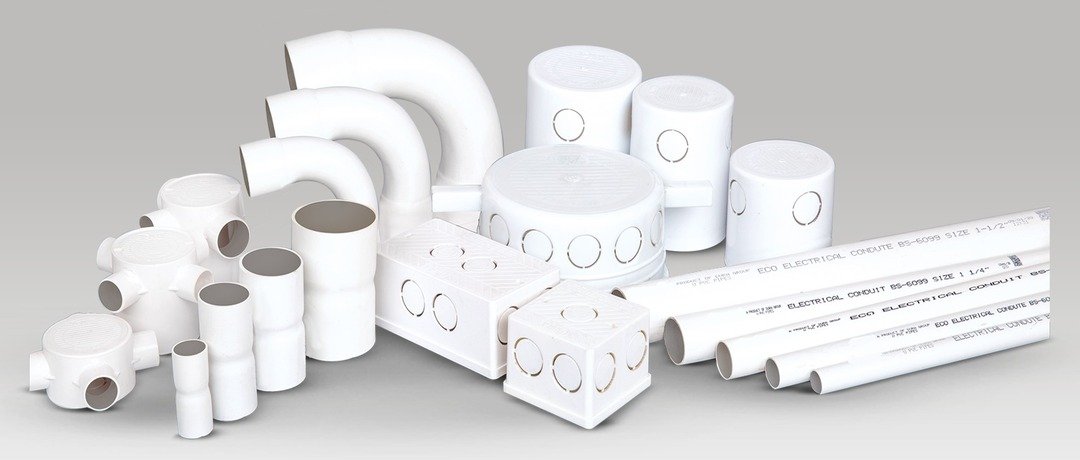
Conduit fittings play a crucial role in electrical installations. They are used to connect, terminate, or change the direction of electrical conduits, which house electrical wires and protect them from environmental damage. The primary purpose of these fittings is to ensure safe and reliable electrical systems, minimizing the risk of damage or short circuits. Proper use of conduit fittings helps maintain the integrity of electrical installations, whether in residential, commercial, or industrial settings.
Electrical systems must adhere to safety standards, and conduit fittings are essential components in achieving compliance. They provide support and protection for wiring, helping to prevent exposure to moisture, chemicals, and physical impacts. Additionally, these fittings facilitate the organization of electrical systems, making maintenance and troubleshooting easier. Understanding the different types of conduit fittings and their applications is vital for anyone involved in electrical work. Whether you’re a homeowner, contractor, or DIY enthusiast, knowing how to choose and use conduit fittings effectively can lead to safer and more efficient electrical projects.
Types of Conduit Fittings
There are several types of conduit fittings, each serving specific functions within electrical installations.
Connectors
Connectors are used to join two pieces of conduit together. They ensure a secure and continuous path for the electrical wires inside. Connectors come in various styles, such as threaded or slip-on, depending on the type of conduit being used. Choosing the right connector is crucial for maintaining a safe electrical system.
Couplings
Couplings serve a similar purpose as connectors, but they are primarily used to connect two lengths of conduit. They provide a seamless transition between sections, ensuring that electrical wiring remains protected throughout its journey. Proper installation of couplings is vital to prevent any gaps that could lead to wire damage.
Elbows
Elbows are fittings that allow conduits to change direction, typically at angles of 90 or 45 degrees. This flexibility is essential in navigating around obstacles in construction environments. Elbows come in various materials and configurations, making them versatile for different applications.
Adapters
Adapters are used to connect different types or sizes of conduits. For instance, an adapter might connect a PVC conduit to a metal conduit. This versatility is particularly useful when upgrading or modifying existing electrical systems.
Materials Used for Conduit Fittings
The materials used for conduit fittings can greatly influence their durability and performance.
Common Materials
The most common materials for conduit fittings include PVC, steel, and aluminum.
- PVC: Lightweight and resistant to corrosion, PVC fittings are ideal for indoor and outdoor applications where moisture is a concern. They are easy to install and often more affordable than metal options.
- Steel: Steel fittings are strong and durable, making them suitable for heavy-duty applications. They offer excellent protection against physical damage and are often used in industrial settings.
- Aluminum: Lightweight yet strong, aluminum fittings resist corrosion and are ideal for environments where weight is a factor. They are often used in both residential and commercial installations.
Advantages and Disadvantages
While PVC is great for moisture resistance, it may not withstand high temperatures as well as metal options. Steel fittings provide excellent strength but can rust if not properly coated. Aluminum offers a balance of weight and strength but can be more expensive. Understanding the properties of these materials helps in selecting the right conduit fittings for specific projects.
Choosing the Right Conduit Fitting
Selecting the right conduit fitting is essential for ensuring the safety and efficiency of electrical systems.
Factors to Consider
When choosing conduit fittings, several factors must be considered:
- Size: Ensure the fitting matches the diameter of the conduit. Mismatched sizes can lead to loose connections or insufficient protection.
- Type of Conduit: Different materials require specific fittings. For example, PVC fittings should be used with PVC conduits to ensure compatibility and performance.
- Environment: Consider the installation environment. If the fitting will be exposed to moisture, corrosion-resistant materials are essential.
Tips for Selecting the Appropriate Fitting
To make the best choice, assess your specific project needs and the conditions the fittings will face. Consult local electrical codes for compliance requirements, and seek advice from professionals when in doubt. Using the right conduit fittings not only enhances safety but also prolongs the lifespan of your electrical installations.
Installation Tips for Conduit Fittings
Proper installation of conduit fittings is key to ensuring a safe and effective electrical system.
Step-by-Step Guide
- Preparation: Gather all necessary tools and materials, including the conduit, fittings, and appropriate connectors.
- Cutting the Conduit: Use a conduit cutter to achieve clean cuts for optimal fitting.
- Dry Fit: Before finalizing connections, dry fit all components to ensure proper alignment.
- Securing the Fittings: Depending on the type, secure the fittings using screws, glue, or other recommended methods.
- Testing: Once installed, test the connections for stability and proper function.
Safety Precautions
Always wear safety gear when working with electrical installations. Double-check that power is turned off before starting, and ensure that all fittings are securely attached to prevent hazards.
Common Mistakes to Avoid
Avoiding common mistakes during installation can save time and ensure safety.
Typical Errors
One of the most frequent errors is using the wrong size or type of fitting. This can lead to poor connections and compromised electrical integrity. Additionally, not securing fittings properly can result in loose connections, leading to potential hazards.
Troubleshooting Fitting Issues
If you encounter problems, inspect the fittings for proper installation and alignment. If a fitting appears loose or damaged, replace it immediately. Always adhere to local electrical codes to prevent issues during inspections.
Conclusion
Conduit fittings are essential components of any electrical project. They not only protect wiring but also ensure that systems function efficiently and safely. By understanding the various types of fittings, materials, and installation techniques, you can enhance the reliability of your electrical installations. Always prioritize safety and best practices in your work to achieve the best results.

